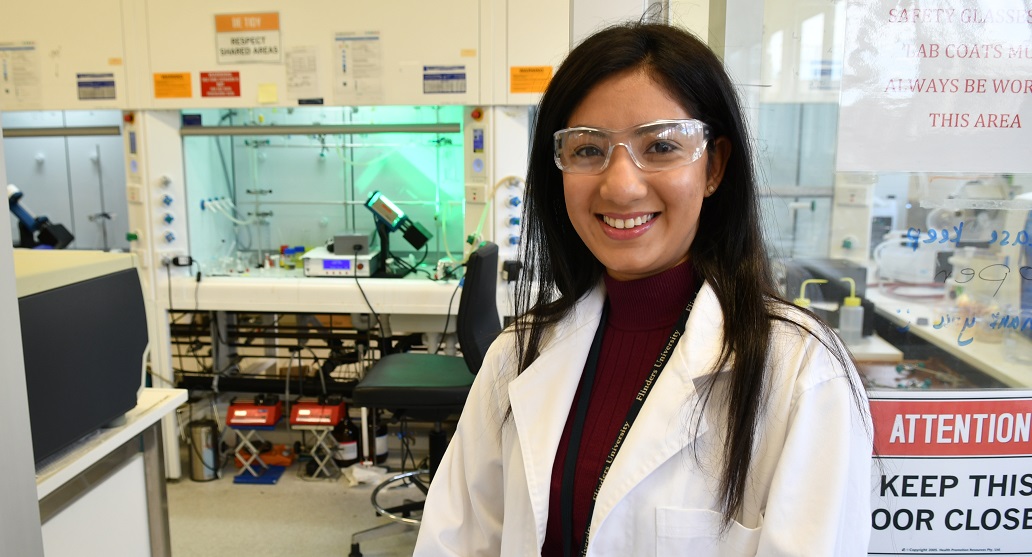
Remarkable South Australian nanoscience invention the Vortex Fluidic Device is now being used in food processing for the first time – with positive results that may help improve people's capacity to absorb fish oil.
The Vortex Fluidic Device, conceived and co-invented by Professor Colin Raston from the Flinders Institute for NanoScale Science and Technology, is already being used in developing a range of novel nanomaterials, including precision-cut carbon nanotubes, but its most recent trials to enhance fish oil processing opens a new realm of possibilities for the device.
"Using the Vortex Fluidic Device can encapsulate fish oil with a simpler process than is conventionally used," says researcher Nikita Joseph, a PhD Candidate working within the Raston Lab at Flinders' Centre for Nanoscale Science and Technology.
"There is a possibility to produce smaller particles through this method, which may enhance people's absorption of the fish oil.
"Through this processing, we aim to improve the n-omega 3 fatty acids from fish-oil. This is important in processing new formulations for the food industry with improved health benefits."
The researchers found that the Vortex Fluidic Device can simplified water-in-oil-in-water encapsulation into one-step process. As a consequence, this allows scientists using this machine to exercise control over the size of particles.
The paper "Continuous flow thin film microfluidic mediated nano-encapsulation of fish oil," by Shan He, Nikita Joseph, Xuan Luo and Colin Raston, has been published in the journal LWT: Food Science and Technology (DOI 10.1016/j.lwt.2018.12.066).
The researchers also found that by varying the different operating parameters of the Vortex Fluidic Device (such as its rotational speed, tilt angle, concentrations and ratio of components, temperature, and flow rates), they were able to vary their choice of phospholipid and combinations, and therefore alter the nature of the fish oil.
This development points to the direction of further studies into the use of the VFD forming nano-meter dimension particles.
It also underlines the viability and versatility of the Vortex Fluidic Device to serve multiple purposes, which has already achieved unravelling proteins (as illustrated in Professor Raston's world-renowned "unboiling an egg" experiment) and created biofuel. "Having made those applications possible, Flinders University is now working hard to stay at the centre of the new wave of technologies that we expect to flow on from this achievement," says Professor Raston.
Professor Raston says these works build on the body of about 60 papers that his research group has published about the Vortex Fluidic Device, "and we have only scratched the surface about what is possible for this device" he explains.






